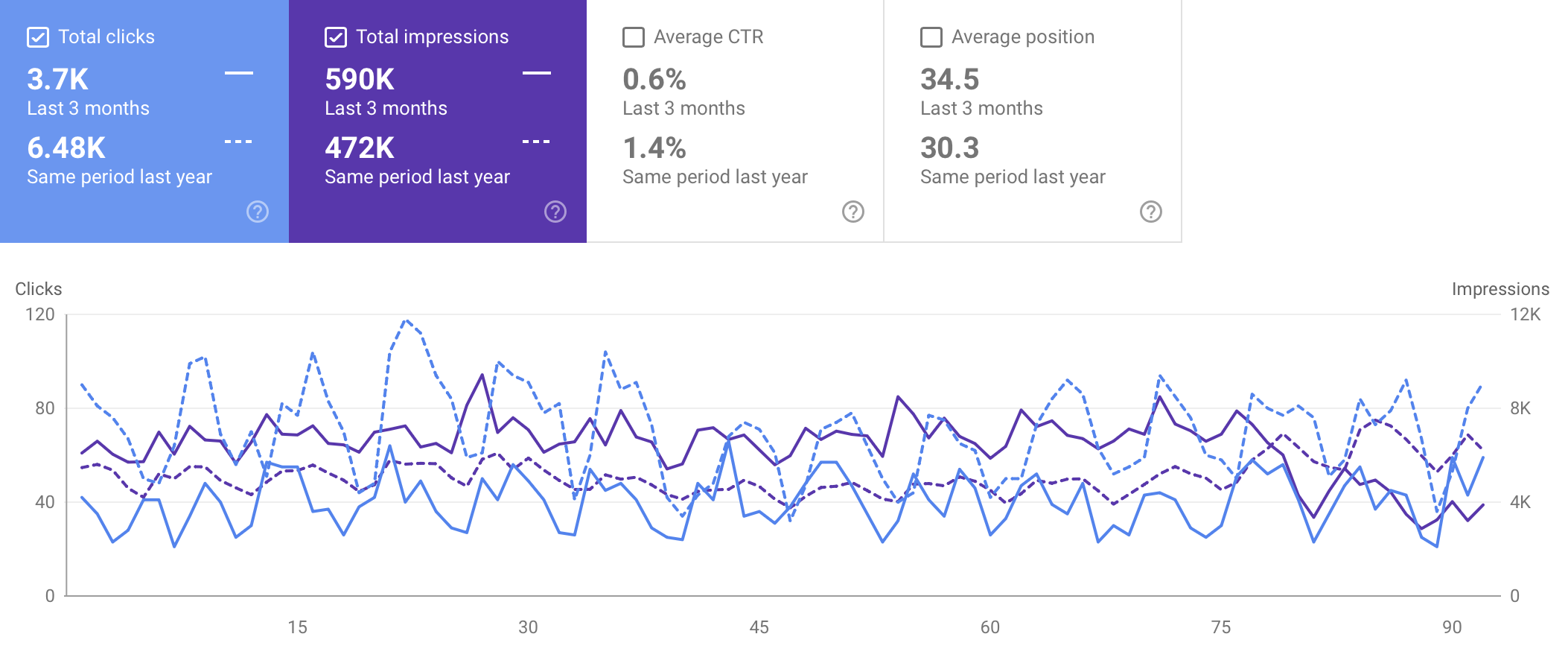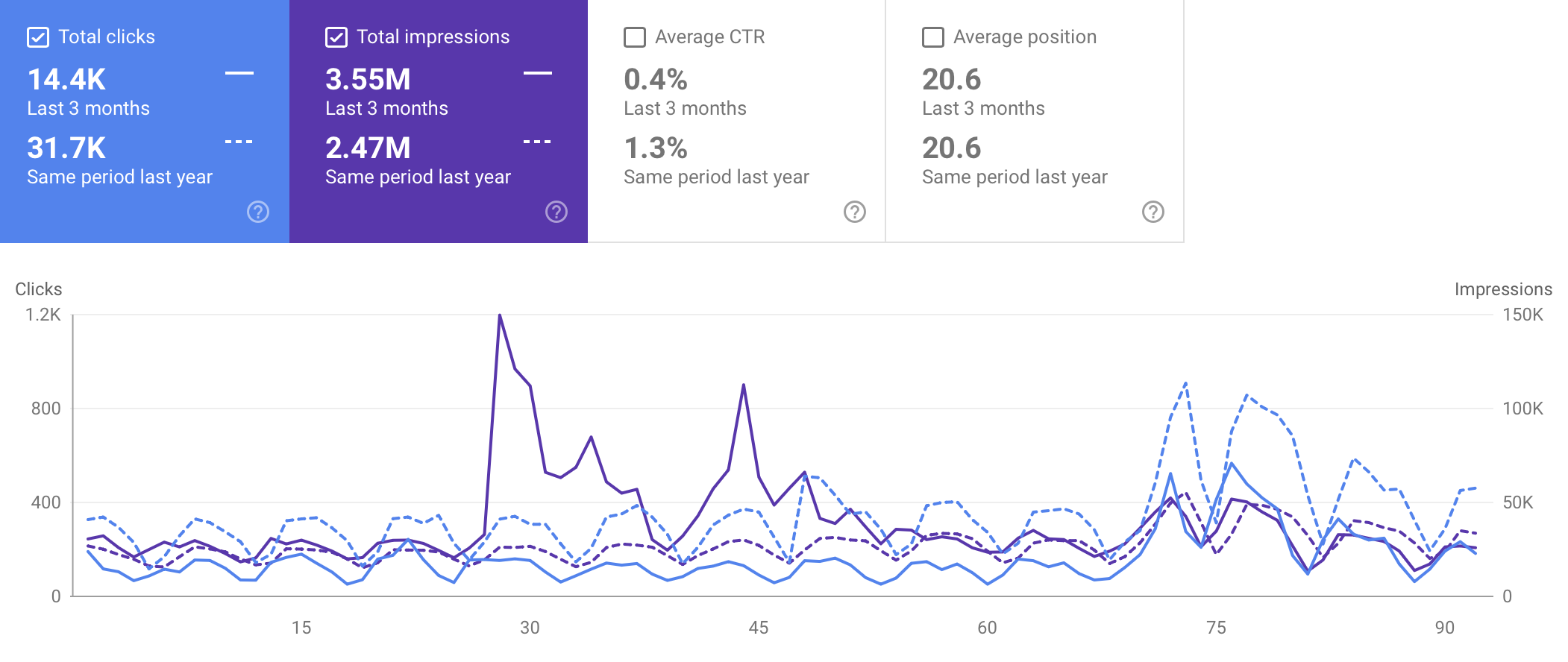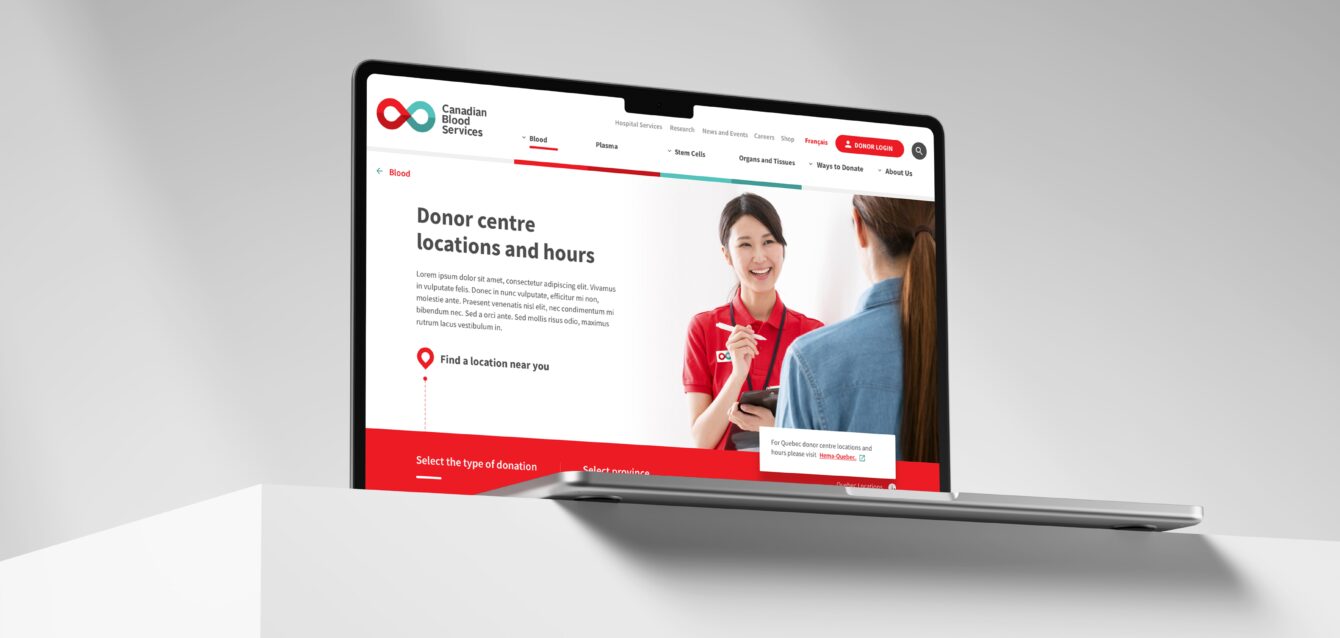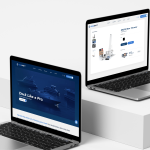If your Search Console looks strange lately — clicks trending down while impressions rise — you’re not imagining things.
This isn’t a sign of SEO failure.
It’s the result of a major change in how Google counts AI-driven search traffic.
Towards the end of the summer this year, Google officially began including clicks from AI Overviews and AI Mode in Search Console’s “Web” search data.
Until then, your AI-driven impressions and clicks were underreported or blended inconsistently. That means the last several months of data are transitional, and comparisons to earlier periods may not be accurate.
At WebMarketers, we’ve been monitoring this rollout closely so our clients can stay confident and informed. Here’s what’s happening, what it means, and how we’re helping businesses stay ahead of the curve.

Google’s New AI Reporting Rules Explained
Google’s documentation confirms that AI Overviews and AI Mode are now tracked as part of the standard “Web” search data:
- AI Overviews
- Impressions: Counted when a user scrolls the AI Overview or one of its links into view.
- Position: The entire overview is assigned a single position (often Position 1); all links inside share that same position.
- AI Mode
- Impressions: Counted using standard rules (visible link = impression).
- Position: Each element (link card, image block, etc.) gets its own position value.
Because Google only started counting clicks from AI features recently, earlier reports may have shown inaccurate CTRs or impressions. This explains the dramatic shifts many businesses are seeing in their dashboards.
Why Clicks Are Dropping But Visibility Isn’t
With AI traffic now blended into organic:
- More impressions: Your content is appearing in AI Overviews and AI Mode more than before.
- Lower CTR: Some users get their answer directly from the AI summary, reducing click-through rates.
- Analytics quirks: Clicks from AI Mode may appear as “Direct” or “Unknown” in Google Analytics due to missing referrer data.
In short, the numbers changed because the counting changed — not because your visibility disappeared.
What This Means for Your SEO Strategy
- Adjust expectations: Your baseline metrics have shifted. Increased impressions indicate strong visibility; lower CTR is an expected side effect of AI summaries.
- Don’t panic over month-to-month dips: The reporting change makes direct comparisons to early 2025 (or earlier) unreliable.
- No separate filter yet: Google hasn’t promised a dedicated AI traffic breakdown, so manual analysis is key.

How WebMarketers Keeps You Ahead
We’re not waiting for Google to spoon-feed data — we’re already engineering our own ways to measure and adapt. Our team is:
- Tracking how AI-driven impressions impact key queries.
- Adjusting KPIs to reflect how AI reshapes search behaviour.
- Developing content that earns clicks even within AI Overviews and AI Mode.
By combining Search Console insights, analytics data, and our analysis methods, we’re ensuring clients understand their true visibility and continue to capture qualified traffic.
The Bottom Line
Google’s AI-driven search is expanding how and where your content is seen. While your metrics may look different, your visibility is likely increasing. This is not a sign of lost ground — it’s the next chapter in search.
WebMarketers is at the forefront of this shift, translating these changes into strategies that keep our clients competitive, visible, and thriving in an AI-first search landscape.



